Six Scottish wildcat conservation areas identified
- Published
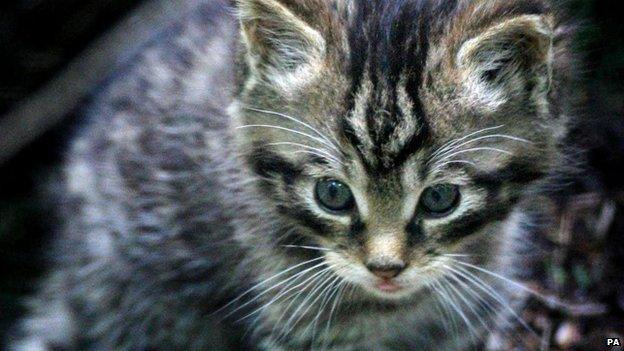
The Scottish wildcat is an endangered species
Six priority areas for Scottish wildcat conservation have been identified following research commissioned by Scottish Natural Heritage (SNH).
Wildcats becoming an endangered species due to mixing with domestic cats, disease and loss of habitat.
The Angus Glens, Strathbogie in Aberdeenshire, Strathavon in Moray and Morvern, Strathpeffer and Dulnain in the Highlands are the six areas.
The research suggested these were where wildcats had the best chance.
Nine areas were assessed as part of the multi-agency Wildcat Action project. Work to conserve wildcats in the six selected sites is to start next year.
Scientists used live trapping, cameras and analysed cat faeces, hair and skin to determine the presence of wildcats, and wild-living cats.
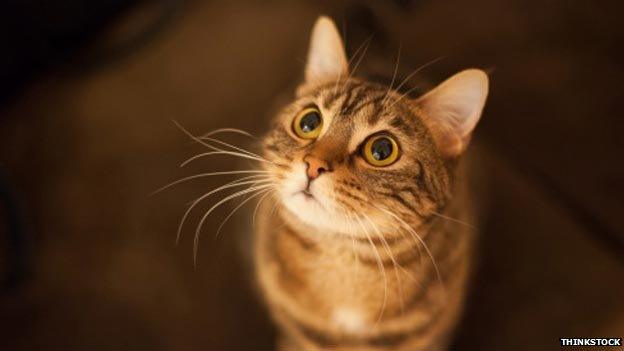
Mixing with domestic cats is one of the factors behind declining numbers of wildcats
Between one and eight wildcats were recorded at the sites, representing between 25% and 75% of all cats recorded in the six areas.

Cat scan
Researchers looked at nine areas of Scotland to check for their potential as priority areas for wildcat conservation.
Six sites were deemed to offer the best chance for wildcats to thrive. SNH and other organisations involved with the Wildcat Action project will work with local communities in each of the areas.
The sites are:
Morvern - an area of the north west Highlands.
Strathpeffer - land around the Ross-shire village offers favourable habitat.
Strathbogie - an area near Huntly in Aberdeenshire.
Strathavon - a strath in Moray.
Dulnain - an area of Strathspey in the Highlands.
The Angus Glens - hills and glens close to the Cairngorms,

Jenny Bryce, SNH's wildlife ecologist, said: "These priority areas give us real opportunity to halt the decline of the Scottish wildcat and preserve its distinctive identity.
"The action plan partners take a pragmatic view - there are good examples of wildcats out there, displaying many of the characteristics of this species. And this is very much the focus of the new Wildcat Action project.
"We have been encouraged by the number and the quality of wildcats that have been observed, given the relatively short duration of the surveys. We think this is indicative of populations persisting more widely."
However, the ecologist added that the threats to the future survival of the species was "ever present".
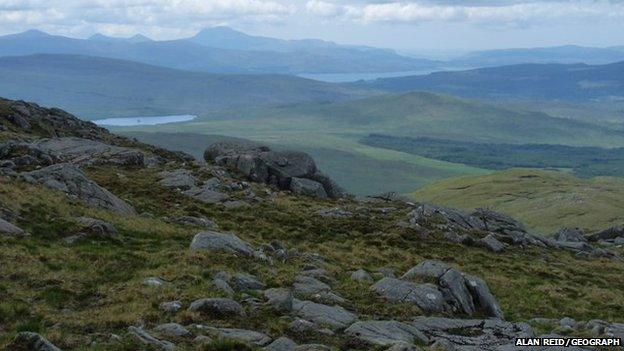
Morvern in the Highlands is one of the six areas
The Royal Zoological Society of Scotland (RZSS) is among organisations involved with the action plan and has been studying samples taken from wild-living cats in the last 30 years.
The society's indicative results of genetic testing appear to show all the samples have some domestic cat genetic markers.
Dr Rob Ogden, RZSS' head of science, said: "We are observing a range of genetic mixes, from feral domestic through to predominantly wildcat.
"As our DNA tests develop, we are increasingly able to identify individual wildcats with the highest conservation value for the population".
In a separate project, a location on the remote Ardnamurchan peninsula in the north west Highlands was designated as a Scottish wildcat sanctuary in July.
Domestic cats near the area are being neutered to prevent them breeding with pure wildcats.
The Ardnamurchan project involves scientist Dr Paul O'Donoghue and Kent-based charity the Aspinall Foundation.
- Published23 July 2014
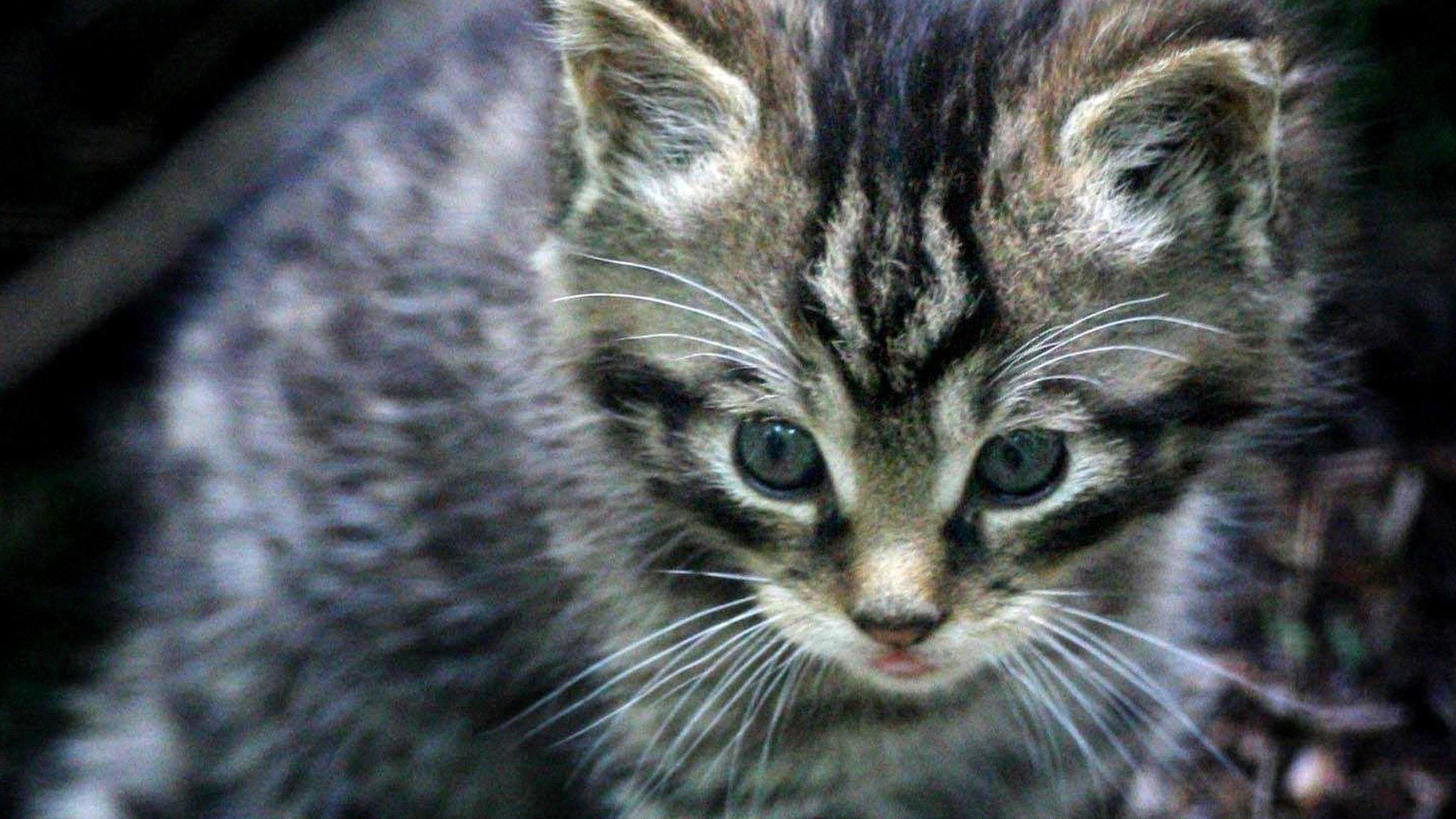
- Published15 July 2014
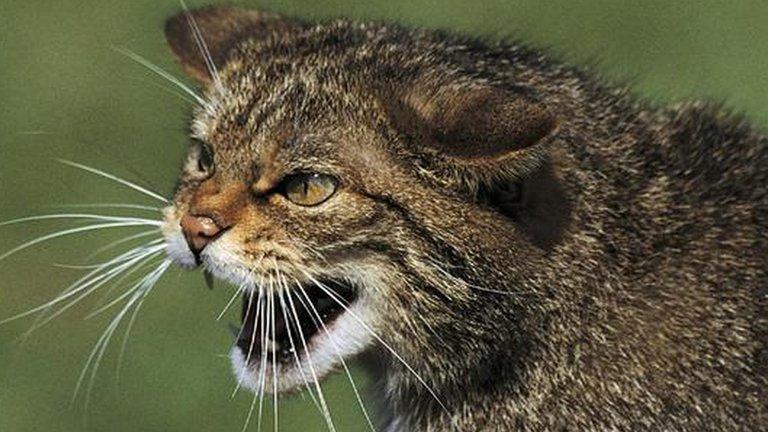
- Published26 September 2012
